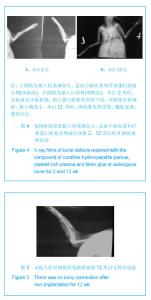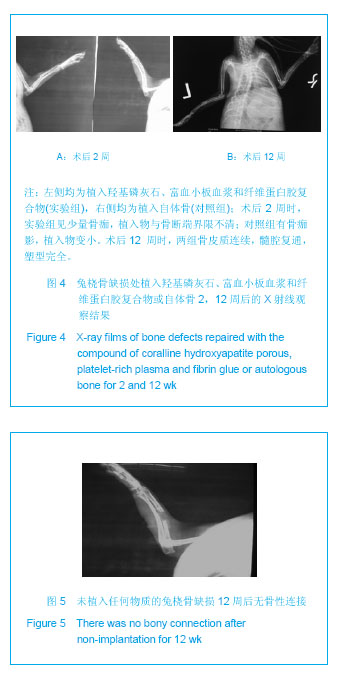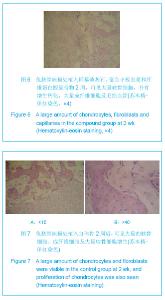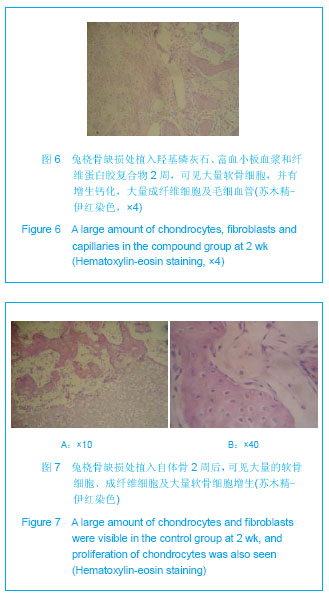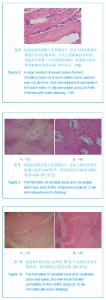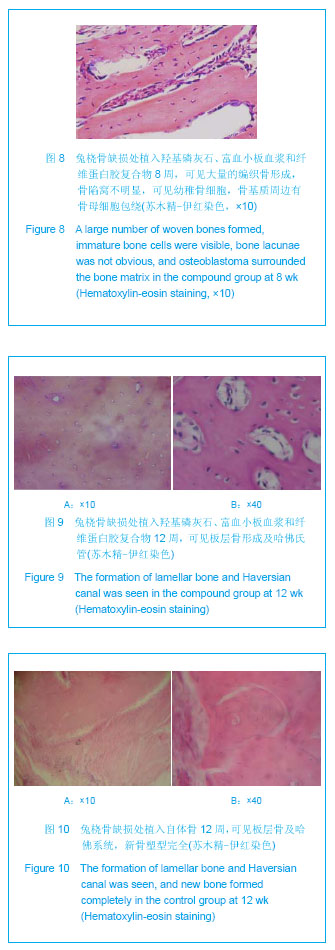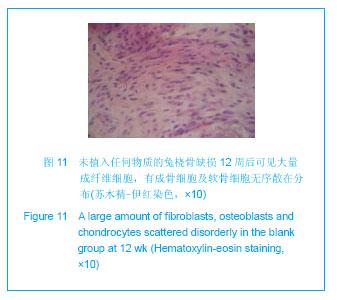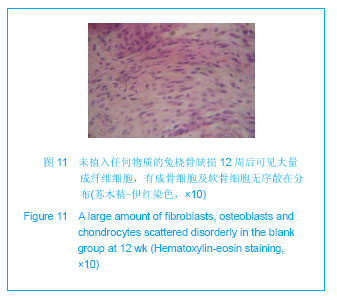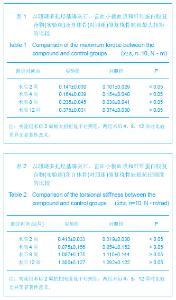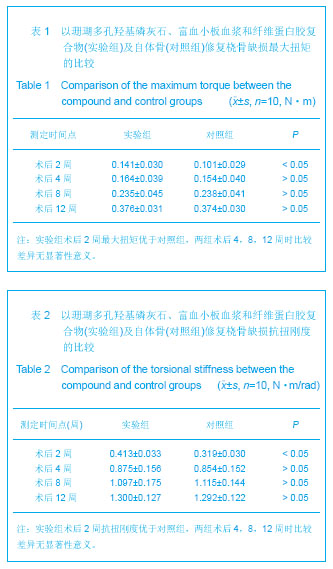| [1] Tancred DC,Carr AJ,Mccormack BA. Development of a new synthetic bone graft. J Mater Sci Mater Med.1998;9(12): 819-823.[2] Mnaymneh W, Mailinin T. Massive allografts in surgery of bone tumors. Orthop Clin North Am.1989;20(3):455.[3] Johnson EE,Urist MR,Schmalzried TP,et al.Autogenic cancellous bone grafts in extensive segmental ulnar defects in dogs. Effects of xenogenic bovine bone morphogentic protein without and with interposition of soft tissues and interruption of blood supply. Clin Orthop Relat Res.1989; (243):254-265.[4] Kimura T,Takemoto T,Fujiwara Y,et al.Esophageal perforation caused by a fish bone Treated with surgically Indwelling drainage and fibrin glueI injection for fistula formation. Ann Thorac Cardiovasc Surg. 2012. [Epub ahead of print][5] Pupka A,Chudoba P,Barc P,et al.Intraoperatinve hemostasis during kidney transplantation and the use collagen mesh dressing cover by fibrin glue ( TachoComb). Polim Med. 2003;33(3):27-32.[6] Fan W,Chen CZ,Li F,et al. Zhonghua Shiyan Yanke Zazhi. 2011;12(12): 1125-1129.范雯, 陈长征, 李菲,等. 翼状胬肉切除联合自体球结膜移植术中使用纤维蛋白胶和缝线有效性的随机对照试验的Meta分析[J].中华实验眼科杂志,2011,12(12): 1125-1129.[7] Liu JP,Yin CG,Song DY.Zhongguo Wuzhenxue Zazhi.2011; 11(1):57.刘继攀,尹长恒,宋德余. 纤维蛋白胶预防腹腔术后肠粘连的临床观察[J].中国误诊学杂志,2011,11(1):57.[8] Ren L,Sun YQ,Fan L.Shiyong Yixue Zazhi.2011;27(3): 434-435.任磊,孙永青,范磊.纤维蛋白胶在髋关节置换手术中的应用[J].实用医学杂志,2011, 27(3): 434-435.[9] Cui W,Liu CL.Zhongguo Guzhi Shusong Zazhi. 1998;4(1): 90-92.崔伟,刘成林. 基础骨生物力学(二):动物骨生物力学指标的选择及计算方法[J].中国骨质疏松杂志,1998,4(1):90-92.[10] Feng YZ.Beijing:Kexue Jishu Chubanshe. 1983:248.冯元祯. 生物力学[M]. 北京:科学技术出版社,1983:248.[11] Langer R,Vacanti JP. Tissue engineering. Science. 1993; 260(5110):920-926.[12] Pelker RR,Friedlaender GD,Markham TC. Biomechanical properties of bone allografts. Clin Orthop Relat Res.1983; (174):54-57.[13] Yang KQ,Wang Z,Sang HX,et al.Yiyong Shengwu Lixue. 2000;15(3):183-186.杨克强,王臻,桑宏勋,等.深低温冷冻异体骨生物力学特性与储存时间的关系[J].医用生物力学,2000,15(3):183-186.[14] Chen GZ, Chen X, Cui HL, et al. Shengwu Lixue Zazhi. 1988; 3(3):43.陈国振,陈玺,崔洪洛,等.振动冲量促进骨重建的实验研究[J].生物力学杂志,1988,3(3):43.[15] Gu HQ,Xu GF.Tianjin:Tianjin Kexue Chubanshe.1993: 361-362.顾汉卿,徐国风.生物医学材料学[M].天津:科学技术出版社,1993: 361-362.[16] Su Y,Hou YW,Gao MZ.Yufang Yixue Qingbao Zazhi. 2001; 17(6): 433-435.苏怡,候延文,高珉之.医用生物蛋白胶生物性能的研究[J].预防医学情报杂志,2001,17(6):433-435.[17] Schantz JZ,Hutmacher DW,Lam CX,et al.Repair of calvarial defects with customised tissue-engineered bone grafts Ⅱ. Evaluation of cellular efficiency and efficacy in vivo. Tissue Eng.2003;9 suppl 1:S127-139.[18] Peng SL,Fang H,Chen AM.Shengwu Guke Cailiao yu Linchuang Yanjiu. 2004;1(2):35-37.彭松林,方煌,陈安民.骨髓间质干细胞与纤维蛋白胶生物相容性的实验研究[J].生物骨科材料与临床研究,2004,1(2):35-37. |
